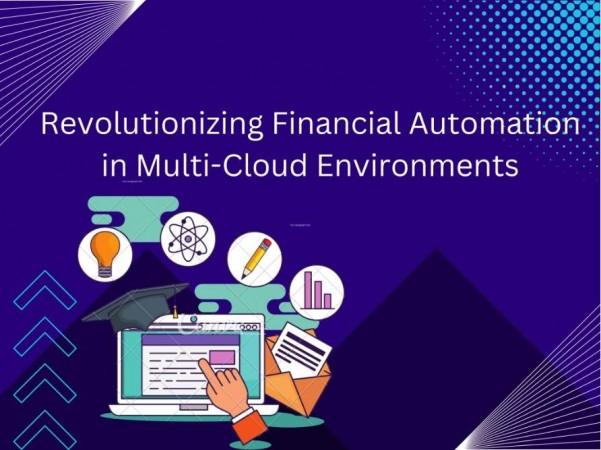
The New Age of Financial Automation,Naveen Kumar Dodde Gowda, an expert in cloud-based financial systems, presents a comprehensive framework for seamless financial automation in multi-cloud environments. His insights focus on integrating enterprise resource planning (ERP) systems, billing platforms, and payment gateways to enhance efficiency and compliance.
The Shift from Legacy Systems to Cloud-Native Solutions
Traditional financial systems, built on monolithic architectures, are gradually being replaced by interconnected cloud-based solutions. These modern frameworks provide scalability, real-time processing, and improved financial data management. However, transitioning from legacy infrastructure poses challenges such as data migration, system downtime, and maintaining business continuity.
The Power of Multi-Cloud Integration
Multi-cloud strategies have emerged as a game-changer for financial automation. Organizations leverage different cloud providers to optimize operations, ensuring seamless interaction between ERP systems, billing solutions, and payment processing platforms. This distributed approach allows businesses to select the best services for specific financial functions while maintaining flexibility and cost efficiency.
Automation Enhancing Financial Accuracy
Financial automation serves as the backbone of multi-cloud integration. By orchestrating complex workflows across cloud environments, automation improves operational efficiency and reduces manual intervention. Automated reconciliation, real-time tax calculations, and intelligent transaction validation contribute to increased accuracy and compliance with financial regulations.
Real-Time Processing for High-Volume Transactions
Modern financial systems require real-time capabilities to handle high transaction volumes with sub-second response times. Automated tax calculations, real-time payment processing, and cross-border transaction management ensure that businesses can meet global compliance requirements while maintaining seamless operations.
API-Driven Financial Architecture
API-first design plays a crucial role in integrating financial systems across multiple cloud platforms. By standardizing communication protocols, businesses can facilitate interoperability between ERP, billing, and payment systems. This approach enhances security, scalability, and maintainability, ensuring long-term sustainability for financial automation solutions.
The Role of Microservices in Financial Automation
Microservices architecture enables the independent development and scaling of financial system components. Whether managing tax calculations, payment gateways, or invoicing systems, microservices enhance modularity and improve resource utilization. This model also enables organizations to adopt emerging technologies without overhauling their entire financial infrastructure.
Strengthening Data Integrity and Security
Ensuring data consistency across cloud platforms is critical for financial automation. Adopting ACID (Atomicity, Consistency, Isolation, Durability) principles, businesses can maintain transaction integrity. Advanced encryption techniques, multi-factor authentication, and secure API protocols safeguard financial data against cyber threats while ensuring compliance with regulatory standards.
Automating Tax Compliance for Seamless Transactions
One of the most significant innovations in financial automation is tax compliance automation. Businesses can integrate specialized tax calculation systems to ensure accurate tax determination based on jurisdiction, transaction type, and industry regulations. By automating tax workflows, organizations minimize errors and reduce regulatory risks.
Strategies for Error Handling and Reconciliation
Automated error detection and reconciliation processes enhance the reliability of financial transactions. Features like dead-letter queues, retry mechanisms, and AI-driven anomaly detection help financial systems address failed transactions efficiently. This ensures that discrepancies are identified and resolved without disrupting business operations.
The Future of Financial Automation
The evolution of financial automation will continue to be driven by artificial intelligence and machine learning. Predictive analytics for fraud detection, automated financial forecasting, and AI-powered compliance checks will further enhance financial system capabilities. Organizations must remain adaptable, integrating emerging technologies while maintaining system stability and security. End-user adoption, regulatory frameworks, cross-functional teamwork, and continuous improvement cycles are essential for successful implementation.
In conclusion,Naveen Kumar Dodde Gowda highlights the transformative potential of financial automation in multi-cloud environments. By adopting API-driven architectures, leveraging microservices, and automating tax compliance, businesses can streamline financial operations, improve accuracy, and enhance regulatory compliance. As financial automation continues to evolve, enterprises must embrace scalable, intelligent systems to remain competitive in a rapidly changing digital landscape.
















![Limited edition Phone (3a) launched in India; what's special about it [read now]](https://data1.ibtimes.co.in/en/full/825642/limited-edition-phone-3a-launched-india-whats-special-about-it-read-now.png?w=220&h=135)